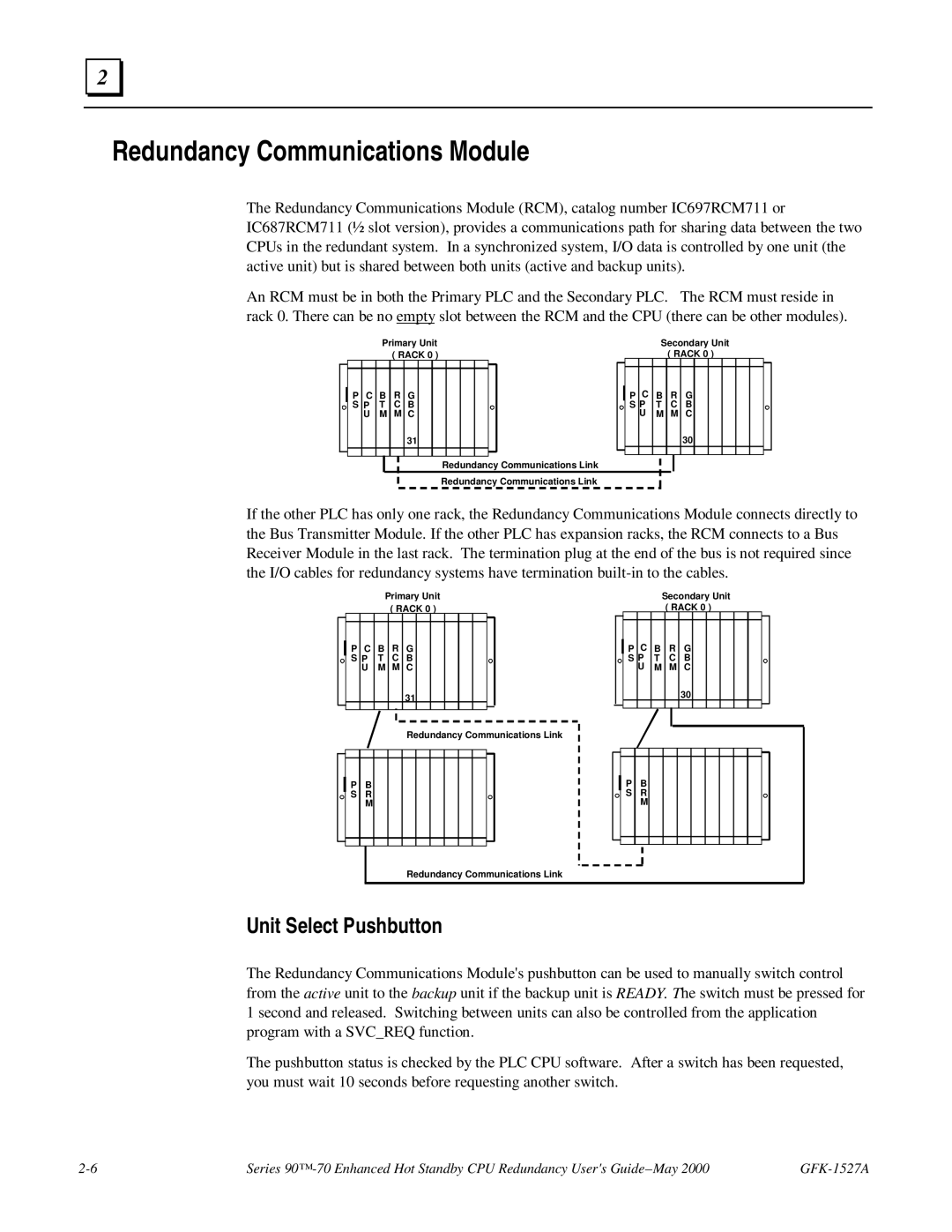
2 |
Redundancy Communications Module
The Redundancy Communications Module (RCM), catalog number IC697RCM711 or IC687RCM711 (½ slot version), provides a communications path for sharing data between the two CPUs in the redundant system. In a synchronized system, I/O data is controlled by one unit (the active unit) but is shared between both units (active and backup units).
An RCM must be in both the Primary PLC and the Secondary PLC. The RCM must reside in rack 0. There can be no empty slot between the RCM and the CPU (there can be other modules).
|
|
| Primary Unit |
|
|
|
| Secondary Unit |
| |||||||||||||||
|
|
|
| ( RACK 0 ) |
|
|
|
|
| ( RACK 0 ) |
| |||||||||||||
|
|
|
|
|
|
|
|
|
|
|
|
|
|
|
|
|
|
|
|
|
|
|
|
|
| P | C | B | R | G |
|
|
|
|
|
|
|
| P | C | B | R | G |
|
|
|
|
|
|
| S | P | T | C | B |
|
|
|
|
|
|
|
| S | P | T | C | B |
|
|
|
|
|
|
|
| U | M | M | C |
|
|
|
|
|
|
|
|
| U | M | M | C |
|
|
|
|
|
|
|
|
|
|
| 31 |
|
|
|
|
|
|
|
|
|
|
|
| 30 |
|
|
|
|
|
|
|
|
|
|
|
|
|
|
|
|
|
|
|
|
|
|
|
|
|
|
|
|
|
|
|
Redundancy Communications Link
Redundancy Communications Link
If the other PLC has only one rack, the Redundancy Communications Module connects directly to the Bus Transmitter Module. If the other PLC has expansion racks, the RCM connects to a Bus Receiver Module in the last rack. The termination plug at the end of the bus is not required since the I/O cables for redundancy systems have termination
Primary Unit ( RACK 0 )
P C B R G
S P T C B
UM M C
31
Redundancy Communications Link
PB S R M
Secondary Unit ( RACK 0 )
P C B R G
S P T C B
UM M C
30
PB S R M
Redundancy Communications Link
Unit Select Pushbutton
The Redundancy Communications Module's pushbutton can be used to manually switch control from the active unit to the backup unit if the backup unit is READY. The switch must be pressed for 1 second and released. Switching between units can also be controlled from the application program with a SVC_REQ function.
The pushbutton status is checked by the PLC CPU software. After a switch has been requested, you must wait 10 seconds before requesting another switch.
Series |
